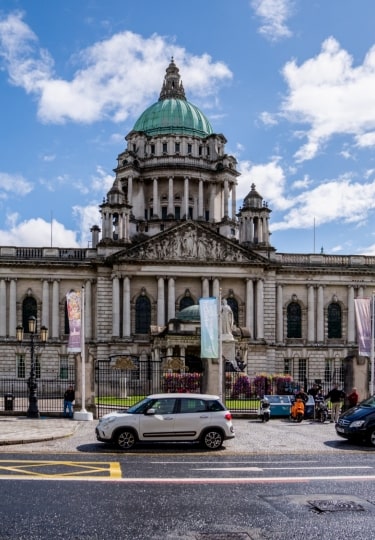For anyone coming to Ireland for the first time, its reputation for beauty, hospitality, music, and history precedes it. How do you sort through that wealth of attractions to find the best tips for traveling to Ireland?
After all, for such a small island (slightly smaller than the state of Indiana), there is a lot to see. To start with, it holds two countries: Northern Ireland, and Ireland—although most visitors won’t even notice a border.
Along the east coast, you’ll discover lively major cities, such as Cork, Dublin, and Belfast. In its flat, central plain, you’ll gaze on the rich farmlands that produce Ireland’s famous butter and beef. Between them you’ll find everything you’ve heard about Ireland, from cozy pubs to ancient castles. You’ll go away vowing to come back—adding even more to its reputation abroad.
Pack for All Climates
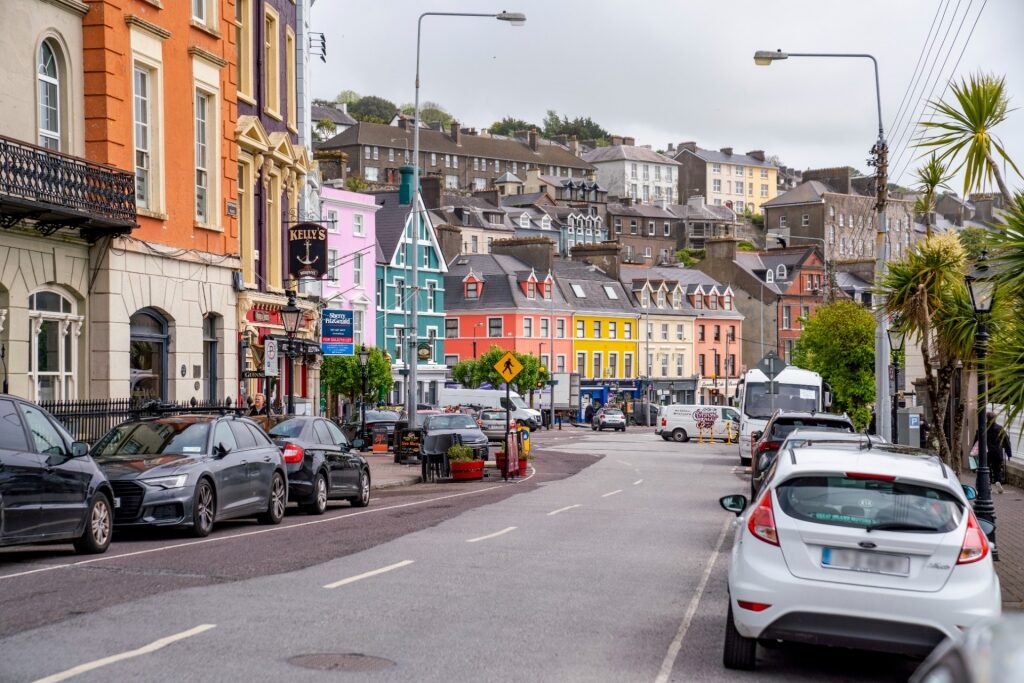
Cork
Admit it, you’d be a bit disappointed to return from Ireland without at least one story about being caught in the rain. Still, the only thing certain about the Irish weather is that it’s changeable.
A day that starts with a shower of rain might suddenly burst into glorious sunshine, as it often does. The best plan is to always pack a waterproof jacket—often a guarantee you won’t need one.
The weather is very localized, so take the forecast as a rough guide only. The good news is that temperatures are usually mild but, if there is a sudden cold snap, a market selling Irish sweaters is always temptingly close by.
Wear Your Walking Shoes
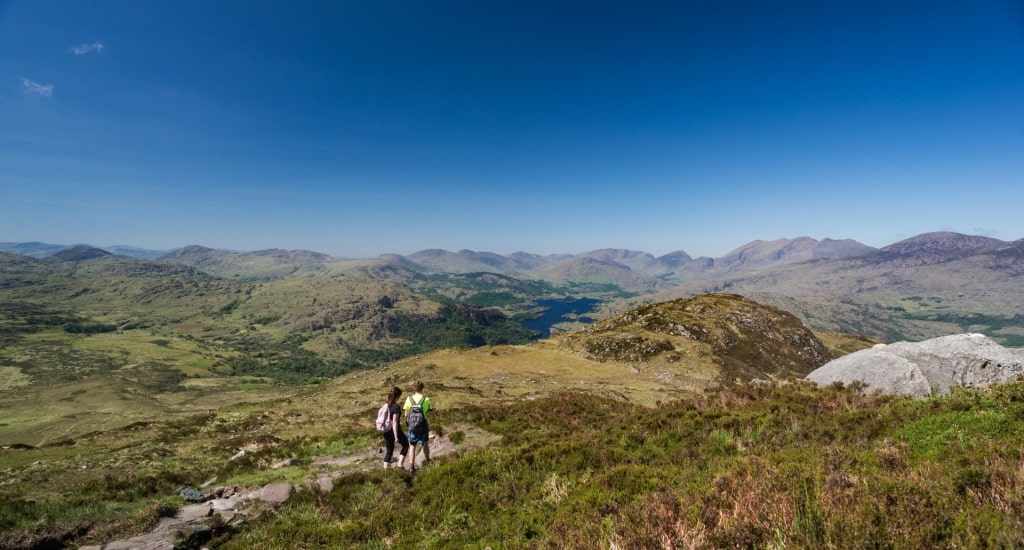
Killarney National Park
One reason to wear good walking shoes is in case of rain. An even better reason is that you see the best of Ireland on foot.
The compact centers of cities such as Belfast, Waterford or Cork are easier to explore by walking. It would also be a shame not to fully enjoy the sights of open spaces such as Killarney National Park, one of the best places to visit in Ireland.
In Belfast, the Cathedral Quarter around the historic St Ann’s cathedral lends itself to urban wandering. It’s the center of a lively arts, and culture scene, with busy cafes, art galleries, and lively pubs.
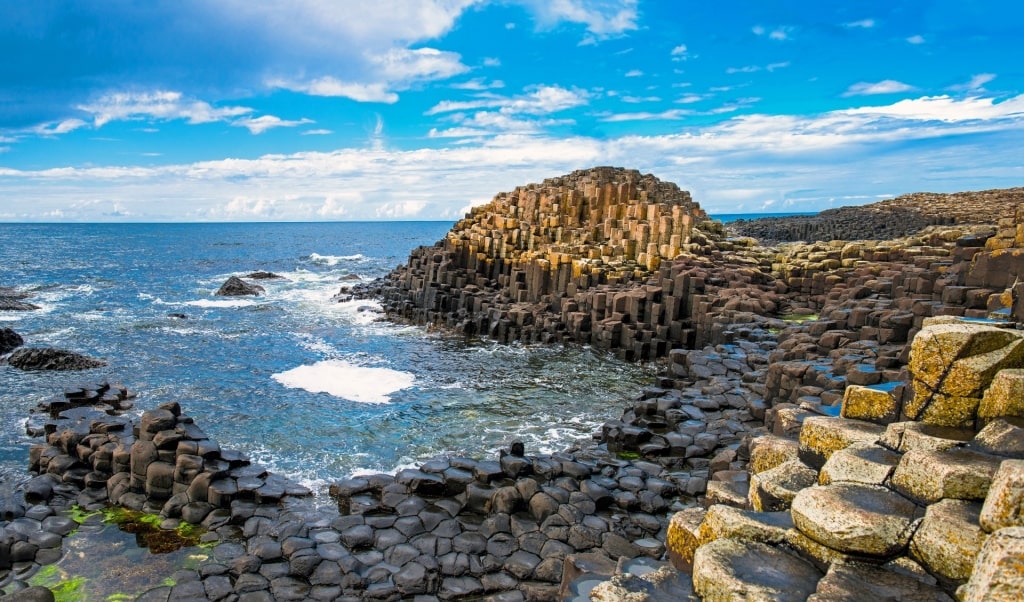
Giant’s Causeway
The Giant’s Causeway is a natural wonder that you’ll really need those walking shoes to get close to. Its rocks can be slippery when wet, but you’ll want to climb them for an epic souvenir photo.
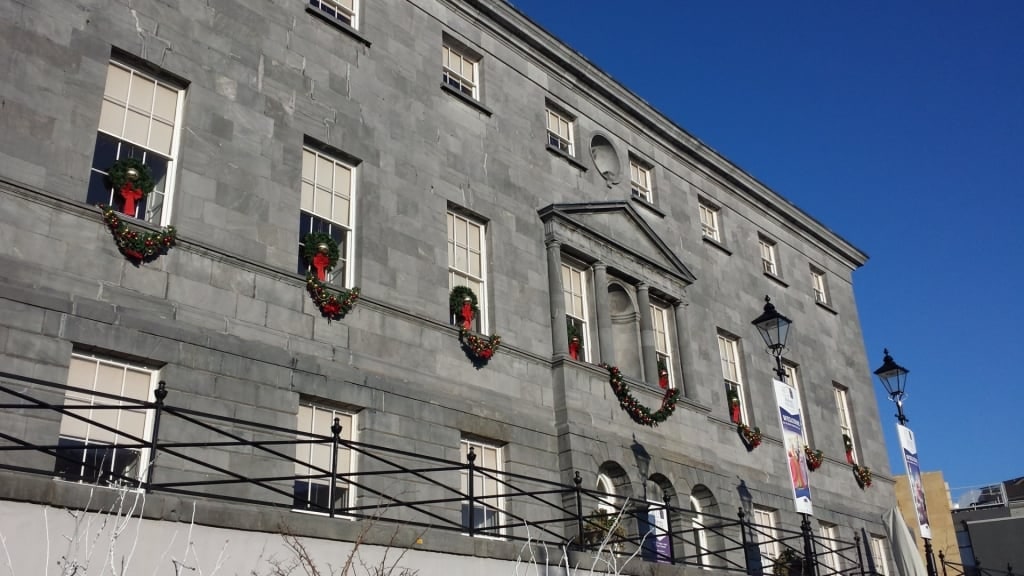
Bishop’s Palace, Waterford Photo by Waterford Treasures on Wikimedia Commons, licensed under CC BY-SA 4.0
Waterford’s Viking, Norman, and later history comes to life in its Viking Triangle. Reginald’s Tower dates back to the 13th century, and the Bishop’s Palace is a Georgian mansion holding 300 years of Waterford’s history.
The Medieval Museum and a full-sized replica of a Viking longboat are other attractions. The King of the Vikings is a virtual reality immersion in Viking life and lore.
Lismore, 45 miles from Waterford, is another town to wander around on foot. Set on the River Blackwater, its sights include Lismore Castle, with its lovely gardens, and the Towers Woodland Trail.
Cork’s city center spread out around the English Market, established in 1788, and still going strong. You’ll find stalls selling fresh bread, meat, Irish cheeses, and fresh coffee.
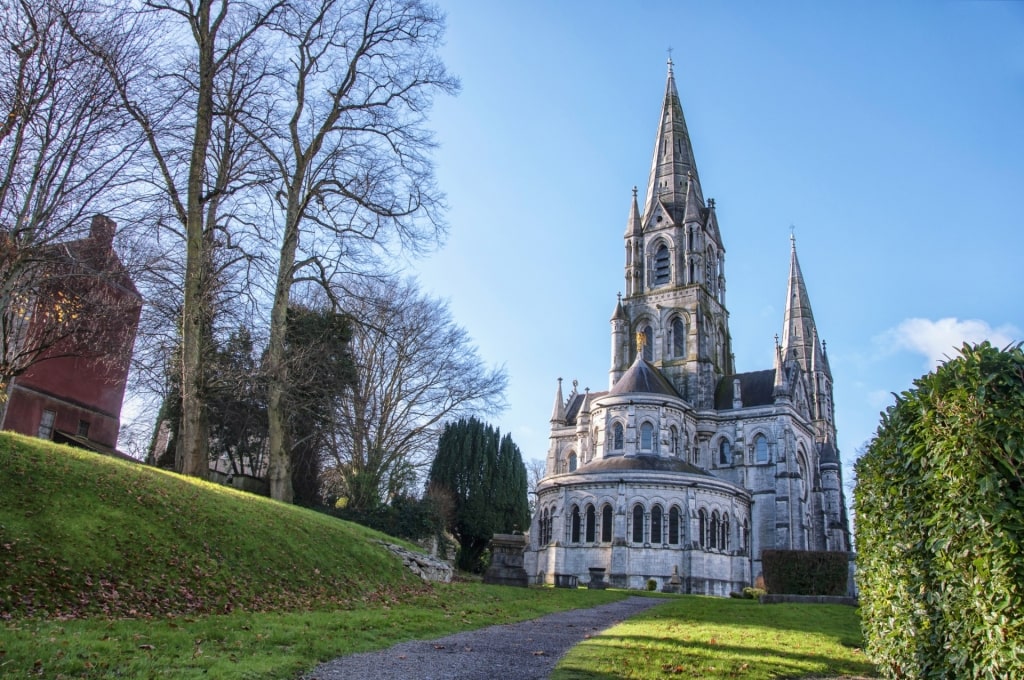
St. Fin Barre’s Cathedral, Cork
From the English Market, it’s a short walk to other Cork sights such as the Gothic-style St. Fin Barre’s Cathedral, and Cork City Hall. At St. Anne’s Church, you’ll want to climb up its tower—home to the famed Shandon Bells—for its 360-degree views over the city.
Visiting St. Patrick’s Street, the city’s main shopping hub, is also one of the best things to do in Cork. Wander down the passageways off the main street to find many fascinating smaller shops, bars, and cafés.
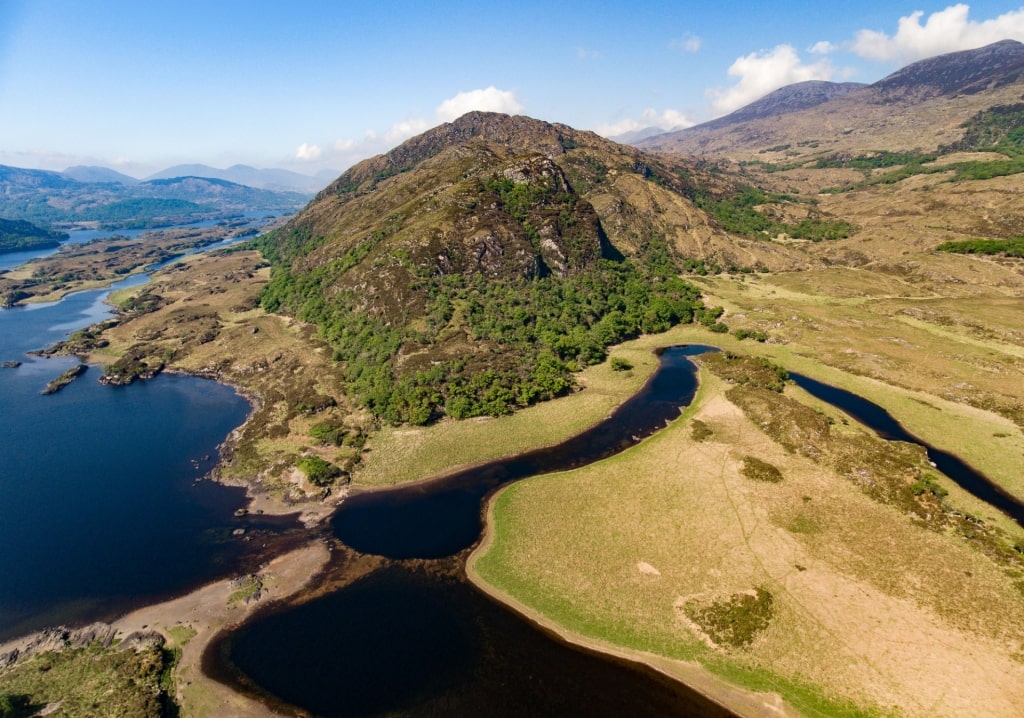
Killarney National Park
Killarney National Park is where hikers start the week-long, 130-mile Kerry Way, but there are much shorter scenic walks in the park itself. They’ll take you to sights such as Torc Waterfall and Ross Castle, and around the beautiful gardens of Muckross House.
Bring Your “Big” Camera
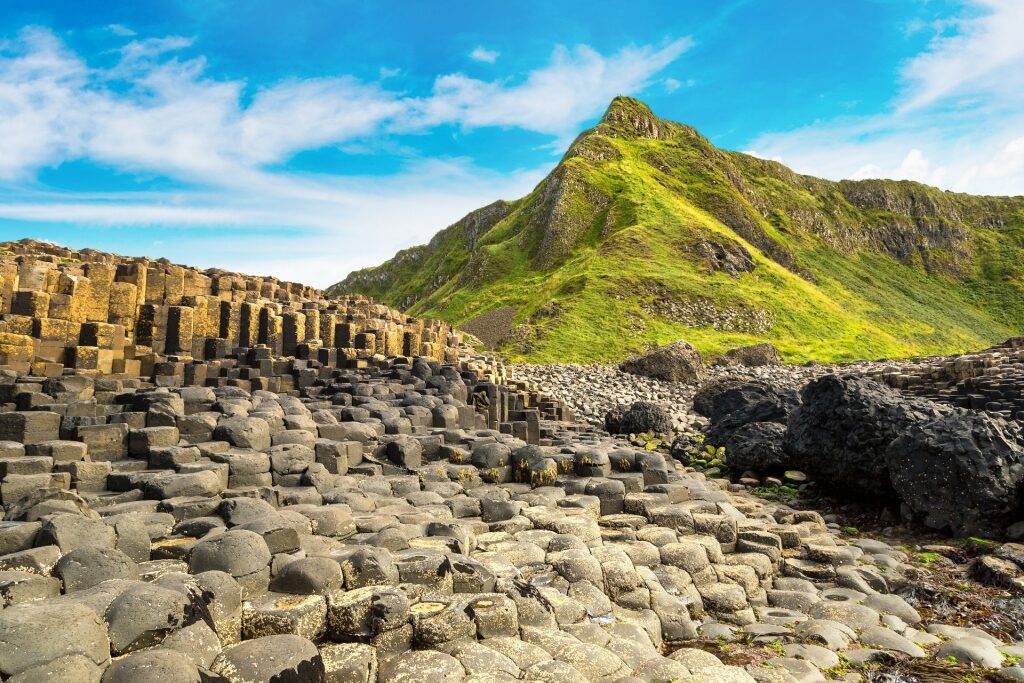
Giant’s Causeway
Most of us now carry a camera in our smartphones. But you might want to think about bringing your “big” camera to capture Ireland’s beauty.
Sights mentioned above, such as Giant’s Causeway, Cork’s English Market, and Killarney National Park will already seem familiar from countless photos. Belfast’s Botanic Gardens, or its St. George’s Market are equally photogenic.
Near Cork, the handsome Blarney Castle is well known as the place to “kiss the Blarney Stone”—said to bestow the Irish gift of eloquence. However, its beautiful gardens are also a delight for photogenic flowers, trees, and a waterfall.
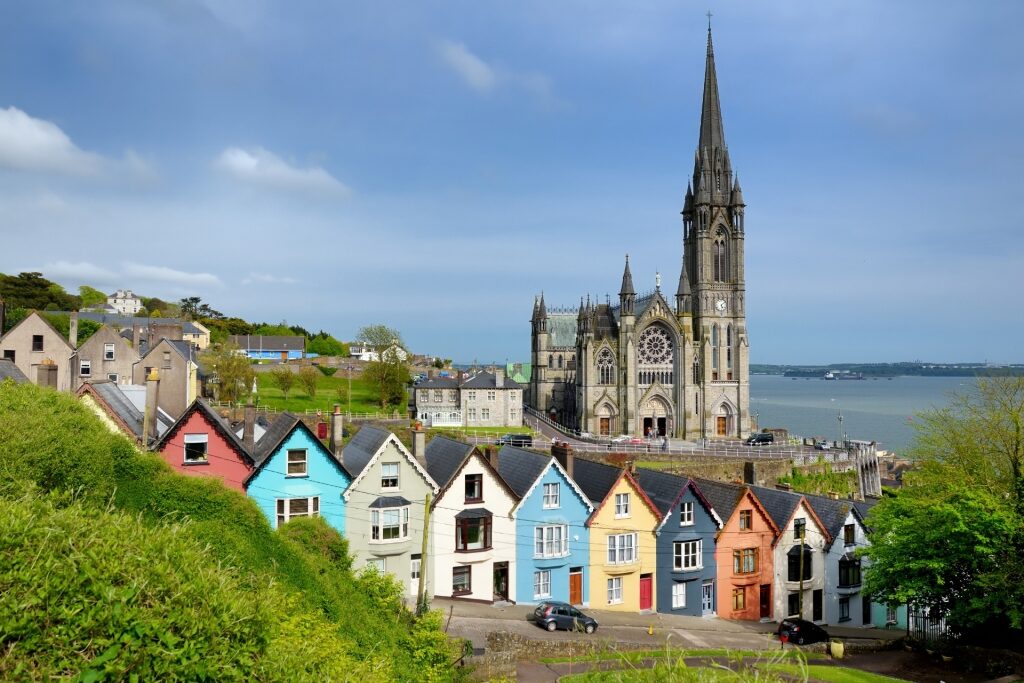
St. Colman’s Cathedral, Cobh
In Cobh, the “Deck of Cards” houses have become a staple of social media. The colorful row of houses run down a steep hill, backed by the equally striking spire of St. Colman’s Cathedral.
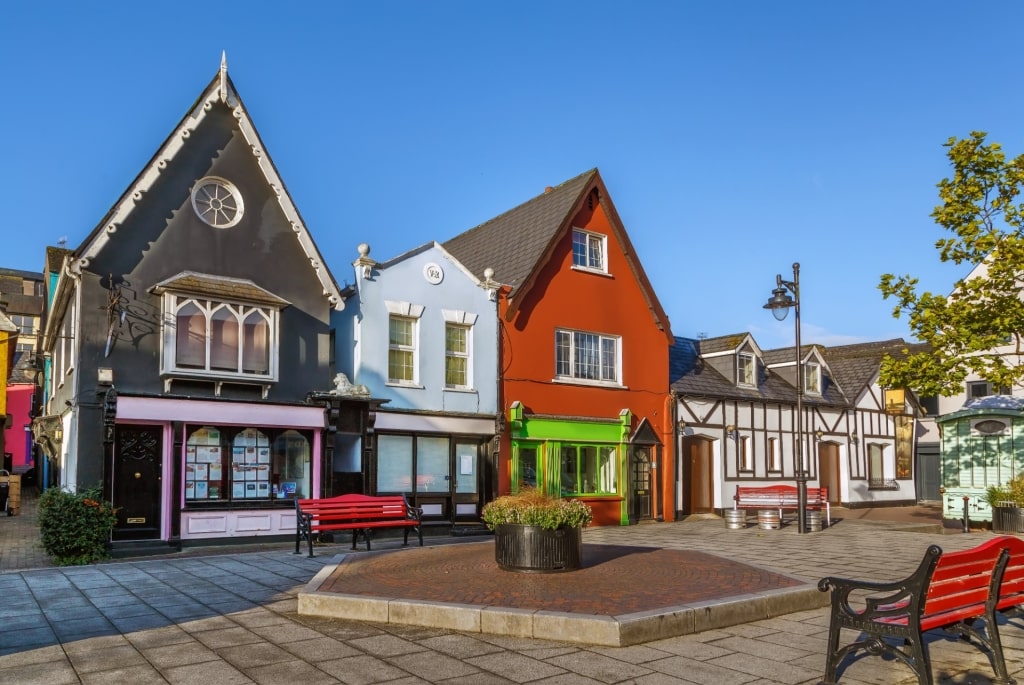
Kinsale
The Old Head of Kinsale is where Atlantic waves beat against the Irish coast. Walk the cliff path to find the best angle to capture the panoramic views.
Kinsale itself is a dream destination for photographers. Not only will you enjoy the colorful buildings, you’ll find several amazing photo galleries to inspire you.
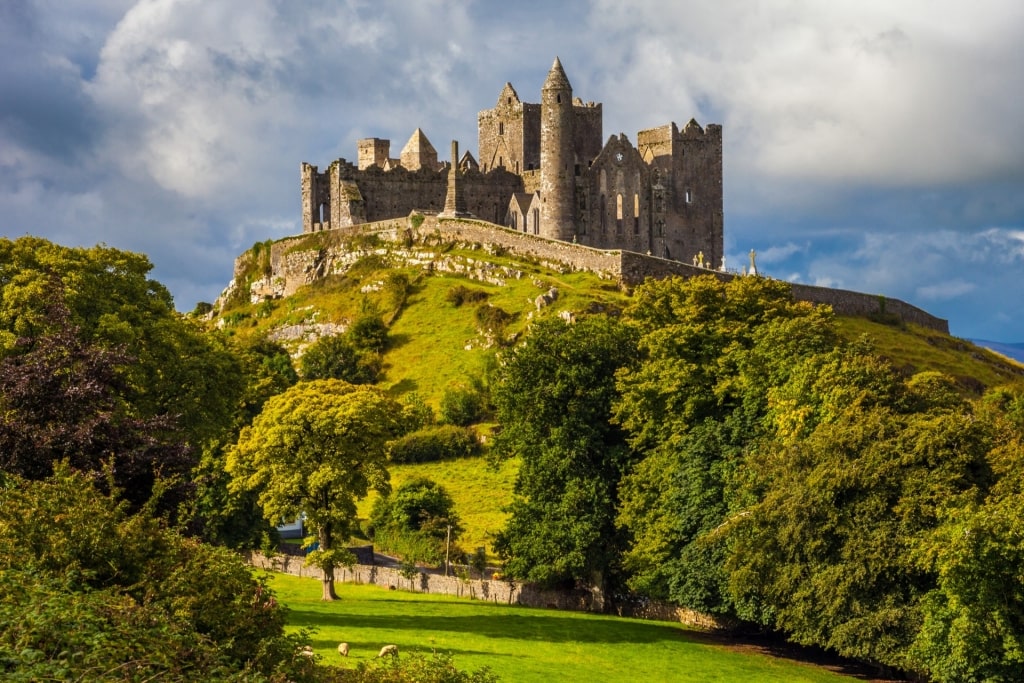
Rock of Cashel
An hour outside Waterford, the Rock of Cashel is the most-visited heritage site in Ireland. The looming presence of this ancient castle, and its surrounding buildings, makes for a truly atmospheric photograph.
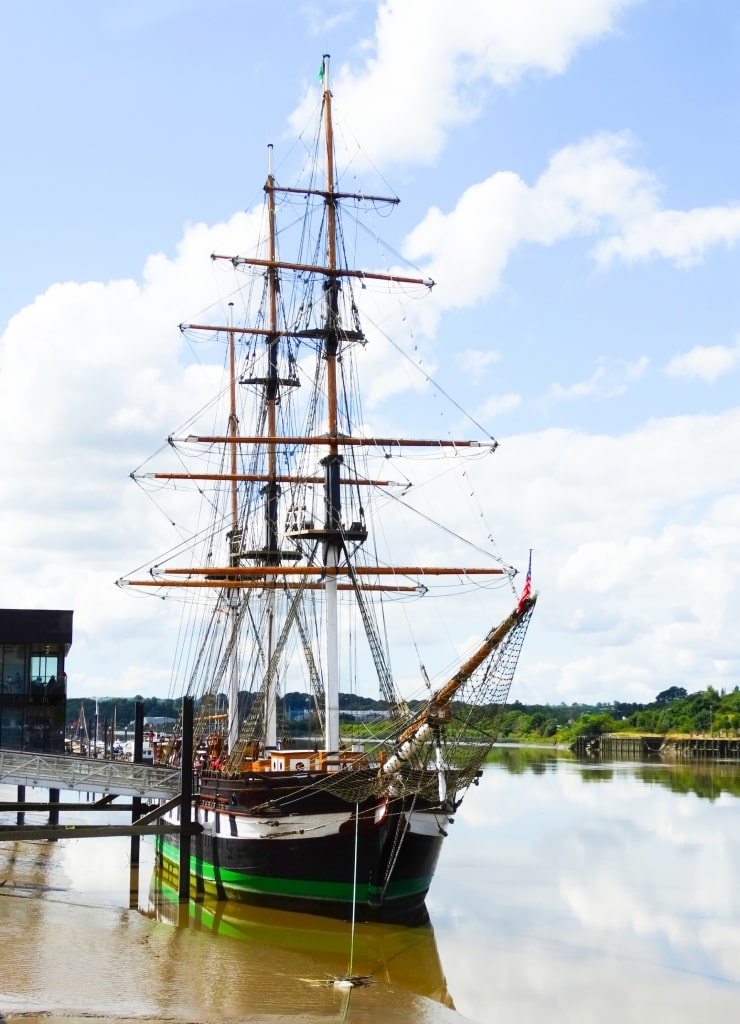
SS Dunbrody “Famine Ship”
Experiences such as the SS Dunbrody “Famine Ship” in New Ross, near Waterford, are also made for photography. Costumed guides tell the story of Irish immigration to the Americas onboard a faithful replica of a ship from 1845.
Read: Best Things to Do in Waterford
Explore Belfast’s Victorian heritage
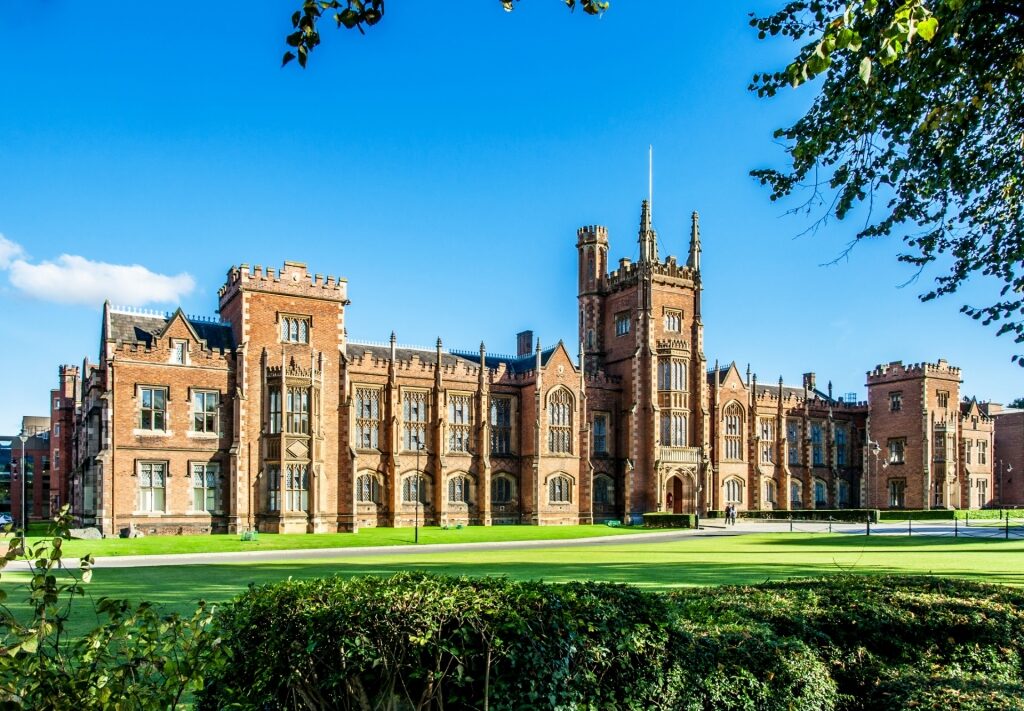
Queen’s University Belfast
Belfast was a powerhouse of the British Empire before Northern Ireland, and Ireland separated into different states in 1922. The city’s boom decades were under Queen Victoria, whose name lives on in Queen’s University Belfast (QUB), the Royal Victoria Hospital, and Queen’s Bridge.
The city is full of landmark buildings dating to the Victorian era. The red-brick heart of QUB, the Lanyon Building, was built in Tudor-Gothic architecture in 1849.
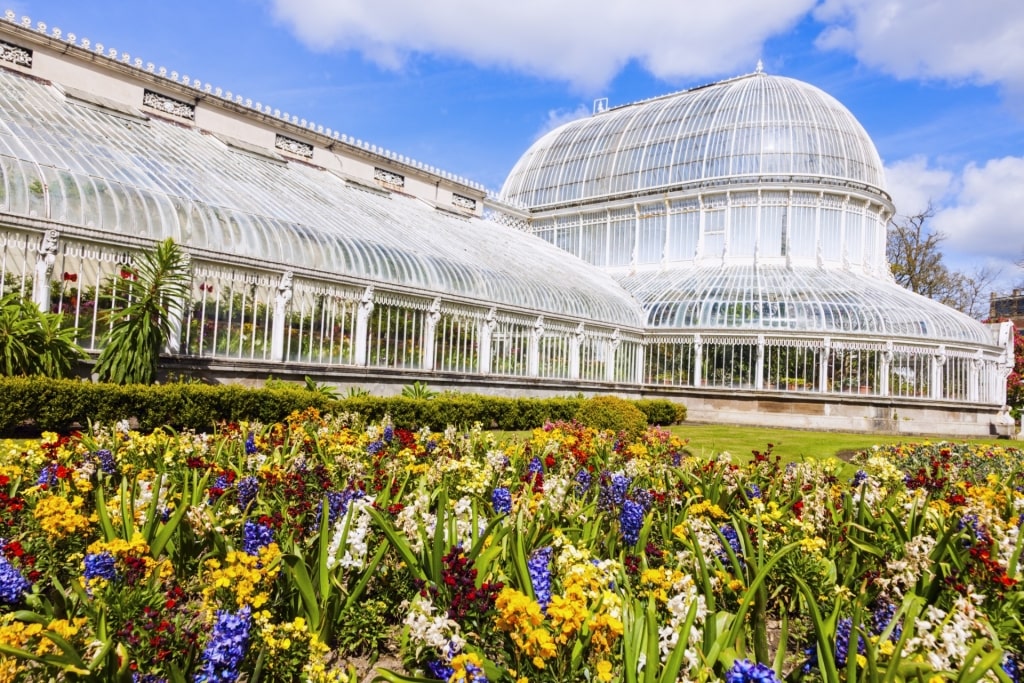
Palm House, Belfast
Nearby are the botanic gardens, where the Palm House of 1852 is an ornate Victorian wonder. By the same architect as QUB, Charles Lanyon, it is a welcome warm refuge on cold or rainy days.
St George’s Market (1896) is a covered market open from 9am to 3pm, every Friday through Sunday. As well as European food, crafts, and antiques, you can listen to local musicians.
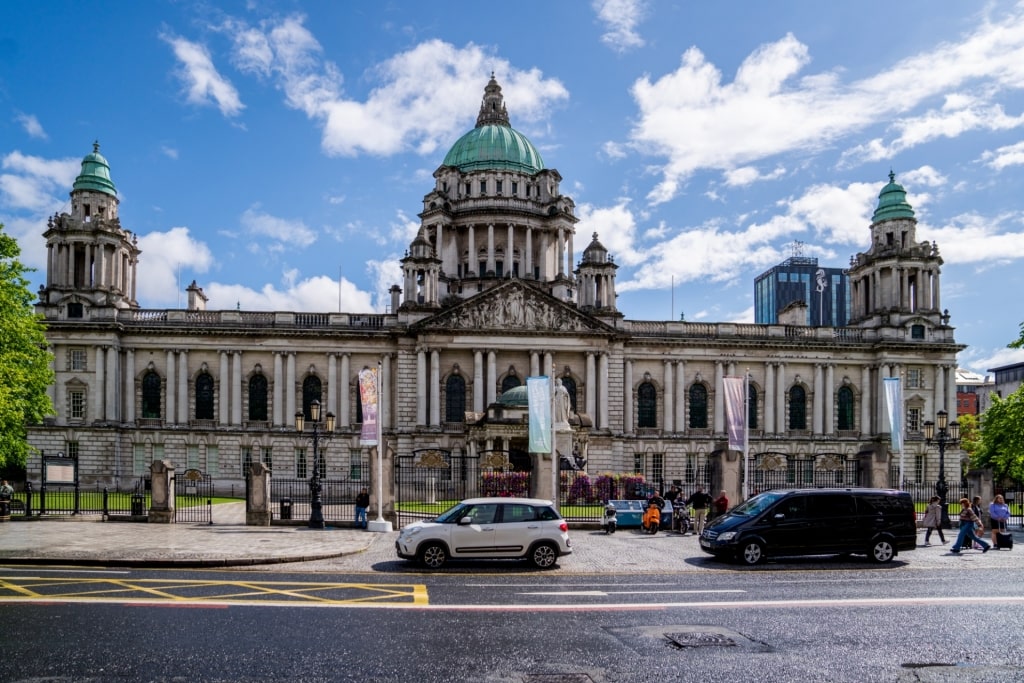
City Hall, Belfast
One of the best things to do in Belfast is to visit the City Hall, built in Baroque Revival style, and opened in 1906, only six years before the Titanic was launched. Inside, an exhibition gives a very worthwhile overview of Belfast’s industrial history.
The Grand Opera House (1895) is a wonderfully ornate Victorian wonder by noted theater architect, Frank Matcham. It has hosted artists from Laurel & Hardy to Luciano Pavarotti on his UK debut.
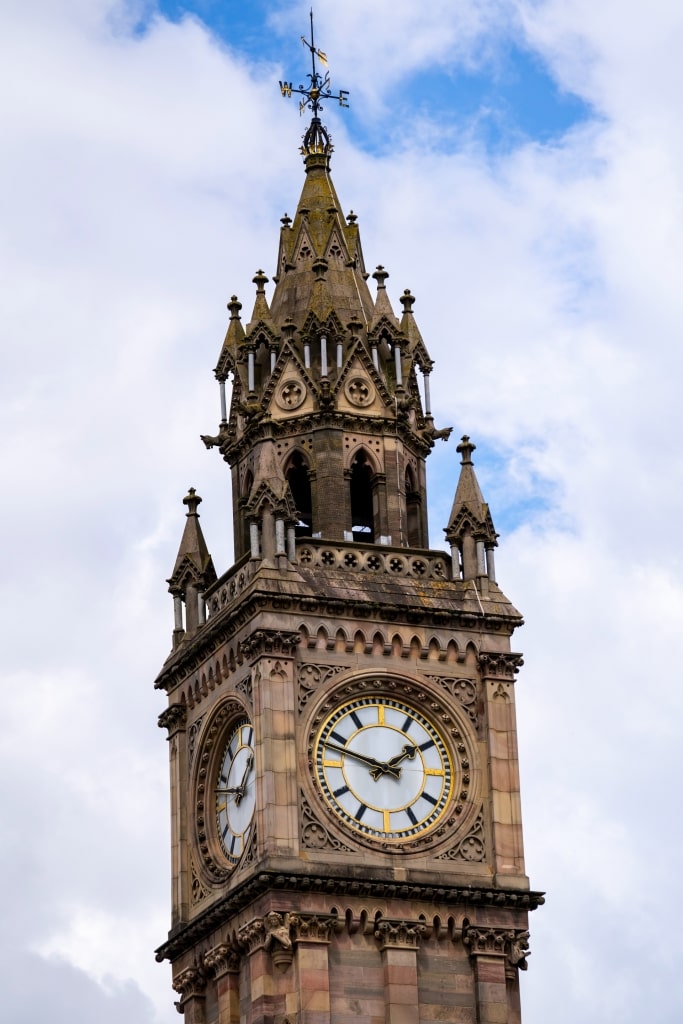
Albert Memorial Clock, Belfast
The Albert Memorial Clock (1869) was built as a memorial for Queen Victoria’s beloved Prince Albert. If you look closely, you can see the tower has a slight lean due to rot in its original wooden piling.
Belfast’s most famous Victorian building, and certainly most popular, is the Crown Liquor Saloon (1885). Its decorative ceilings, carved woodwork, and stained glass windows owe much to Italian craftsmen working on the city’s churches.
Indulge Your Titanic Obsession
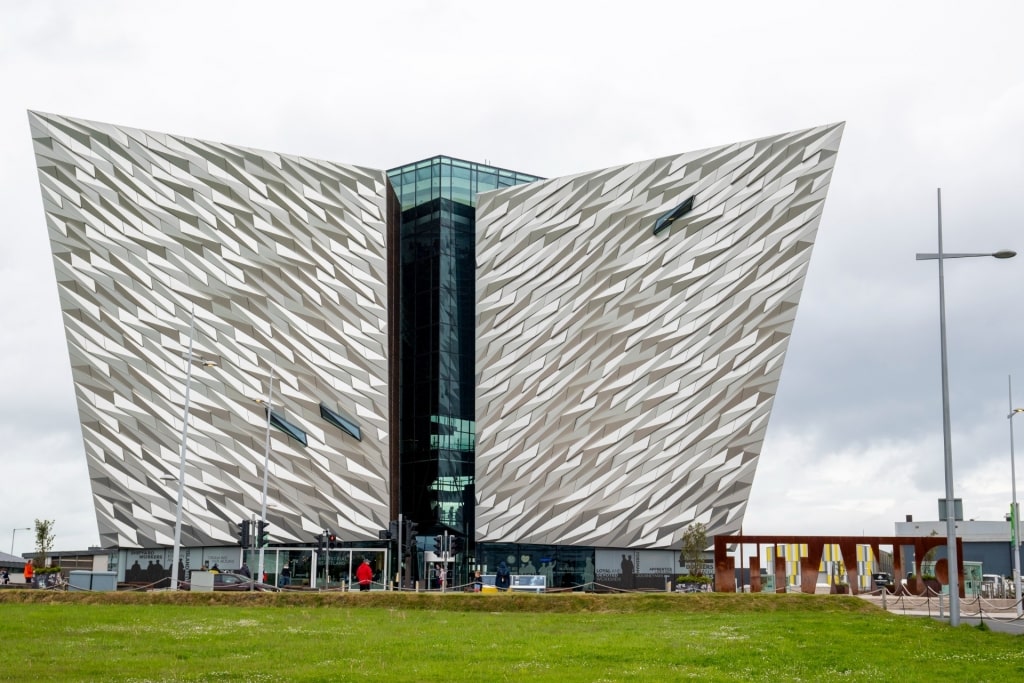
Titanic Belfast
The RMS Titanic was launched at Harland & Wolff in Belfast in 1911, and made a call in Cobh before its fateful voyage in 1912. Its tragic fate gave rise to the many safety protocols that protect passenger ships today.
The slipway down which the ship was launched is the centerpiece of Titanic Belfast, a multimillion, multimedia guide to the ship’s building and life. At the end of the experience, you can consult passenger lists to see if a relative or namesake was on board.
At Belfast City Hall, there is an evocative memorial to the lost passengers and crew, partly funded by shipyard workers. Near it stands a 1903 statue of Edward J. Harland, founder of the Harland & Wolff shipyard.
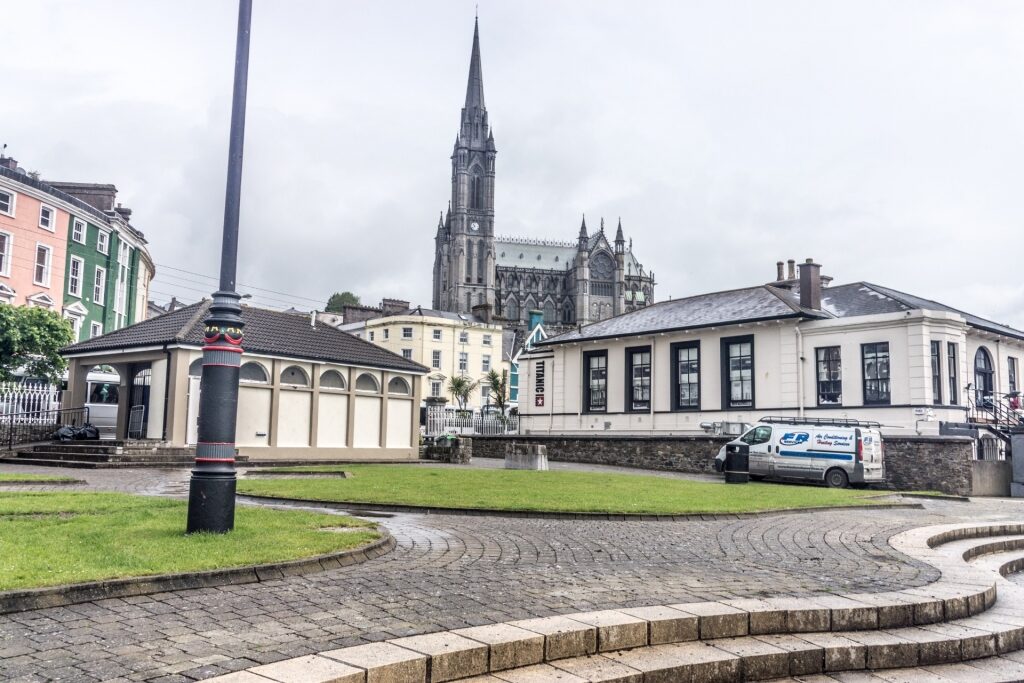
Titanic Experience, Cork Photo by William Murphy on Flickr, licensed under CC BY-SA 2.0
In Cork, the Titanic Experience is set in the original White Star Line’s office building. This museum honors the 123 passengers who boarded her at what was then Queenstown.
In Cobh, the Titanic Walking Tour is a must-do for anyone with an interest. As well as an overview of Cork Harbour, you’ll see the former White Star Line Office, St Colman’s Cathedral, and the Titanic Memorial.
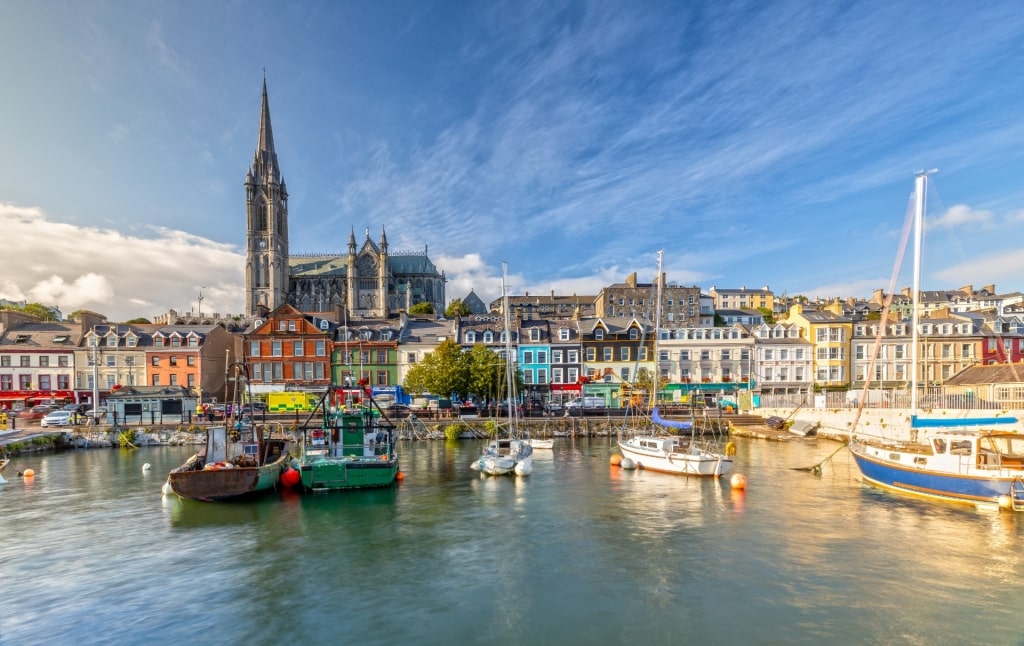
Cork Harbour
As the famous film underlines, 120 of the ship’s Third Class passengers were Irish immigrants, of whom 40 were saved. More than three million Irish people emigrated from Queenstown/Cobh, and their story is told in Cobh Heritage Centre.
An exhibition here dedicated to the Titanic includes the photographs by Fr. Frank Browne, the last taken of the ship. An original letter by passenger Edward Colley, posted in Queenstown, can also be seen.
Read: Exciting Things to Do With Kids in Ireland
Book a Tour
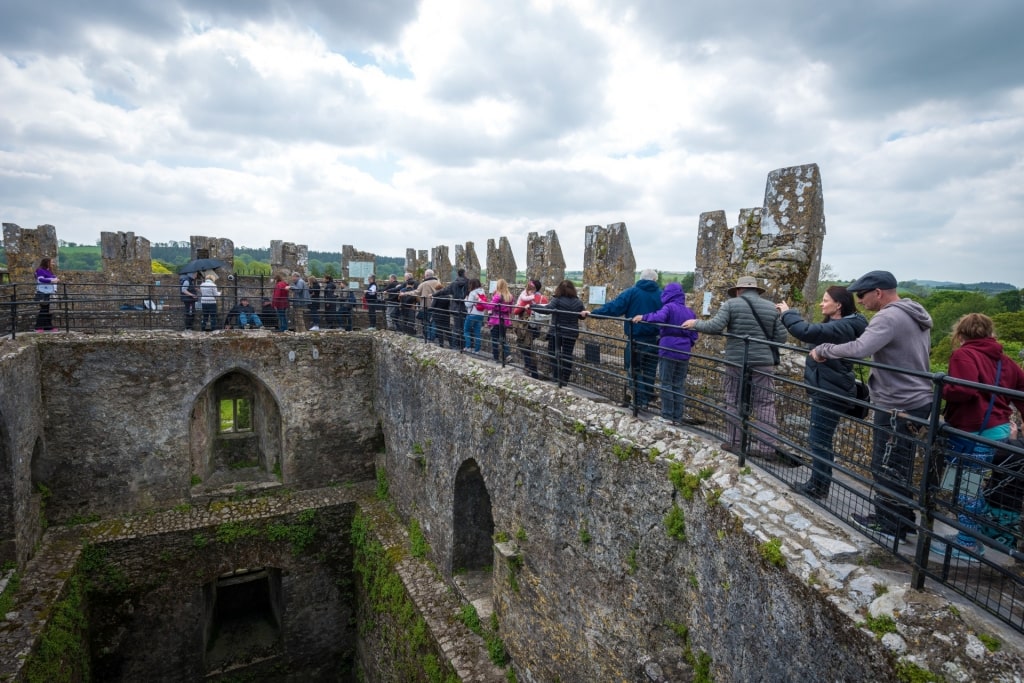
Blarney Castle
In Ireland, distances can be deceptive. A trip that looks short on a map can take much longer on roads that are narrow, and twisty, or where a herd of cows or sheep might lurk around any bend.
From a bus or coach window, such distractions can become a delight, and having a local show you around is one of the top Ireland travel tips to note. You have time to take in the views, while not worrying about driving on the “wrong” side of the road.
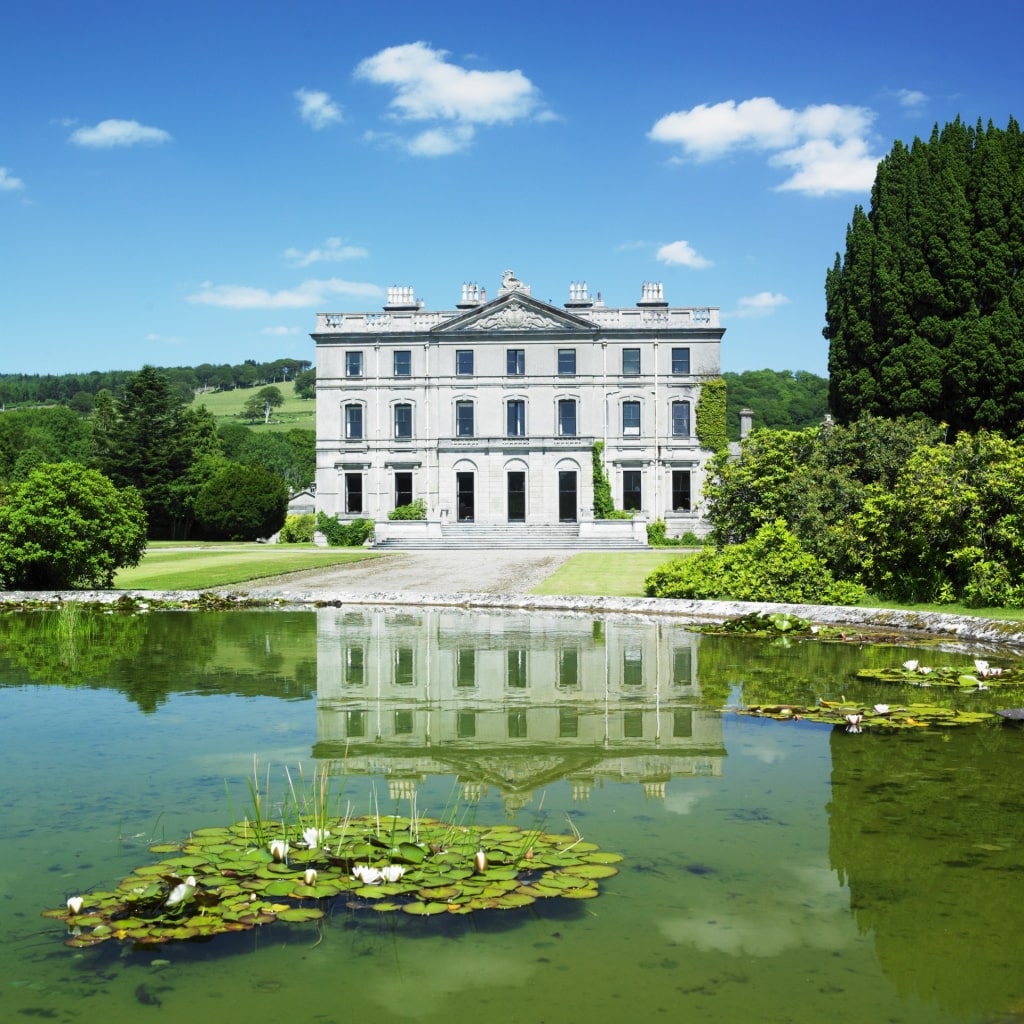
Curraghmore House & Gardens
Destinations where you’ll also enjoy having a guide include some of Ireland’s ancient castles and stately homes. From Waterford, Curraghmore House & Gardens is an easy drive, but you then have over 2,500 acres to be lost in.
Equally close to Waterford is Jerpoint Abbey, a medieval Cistercian Abbey dating to 1180. Its atmospheric cloisters and fascinating carvings will spring back to life with a good guide.
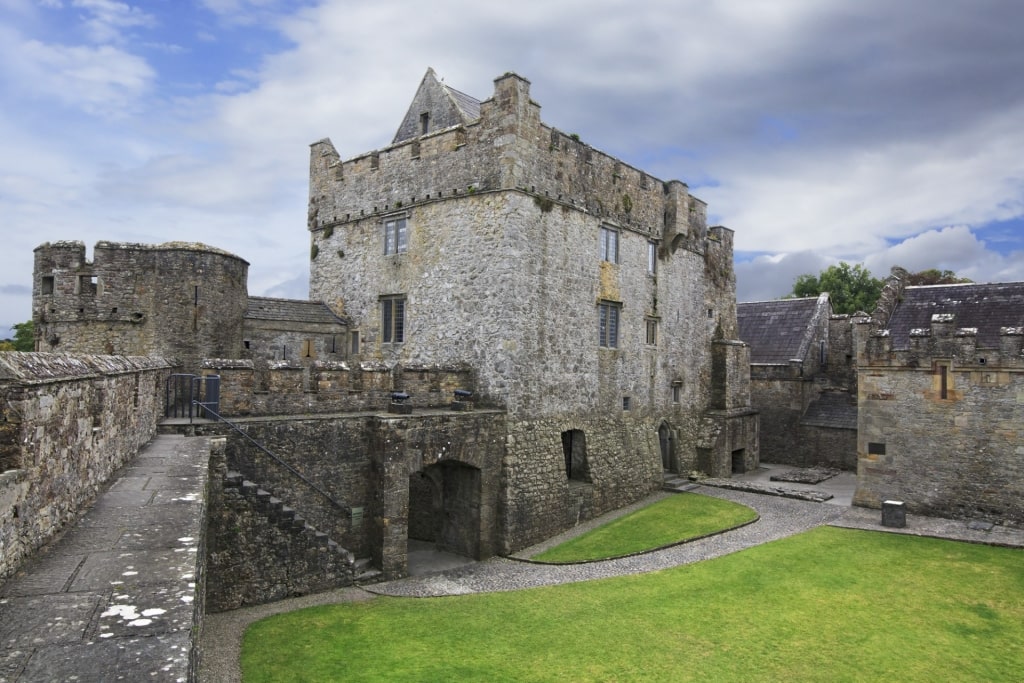
Cahir Castle
One of Ireland’s best castles, Cahir Castle is an hour from Waterford in County Tipperary—which the song tells us is a long way. Built in the 13th century, its impressive walls frequently star in film or TV shows.
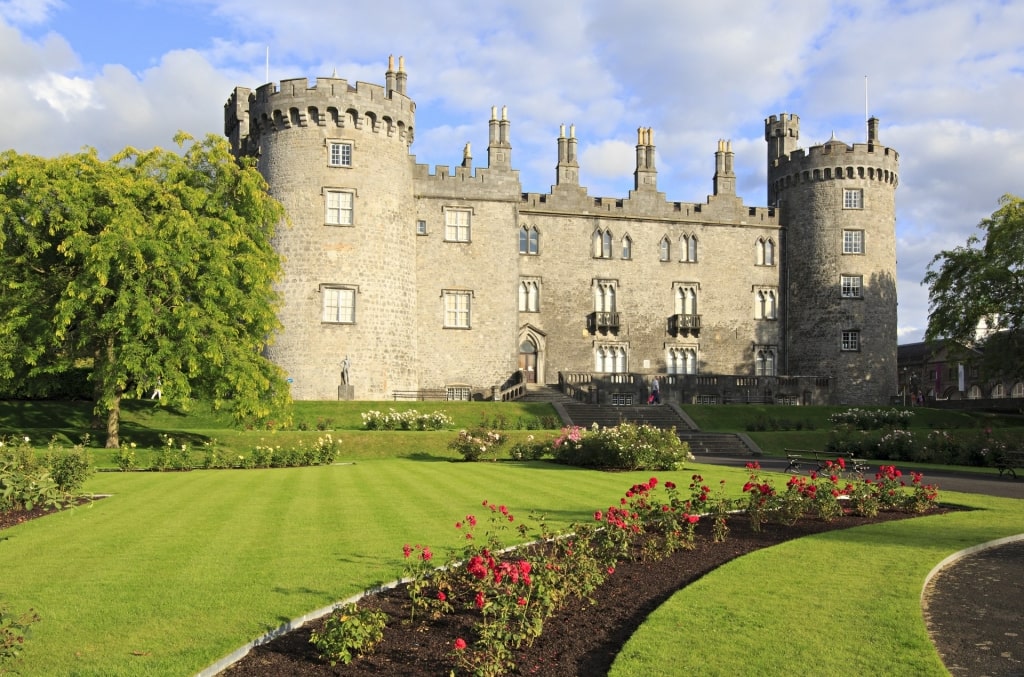
Kilkenny Castle
Kilkenny Castle is similarly old, dating to 1260, giving another long history to be told. It’s the centerpiece of the lovely town of Kilkenny, where a guided tour will take in sights such as St. John’s Priory and Irishtown.
From Belfast, a tour to the Giant’s Causeway will follow the amazing spectacle of the Antrim Coast Road. It can also call into Old Bushmills Distillery whose tasting sessions are another excellent reason not to be driving.
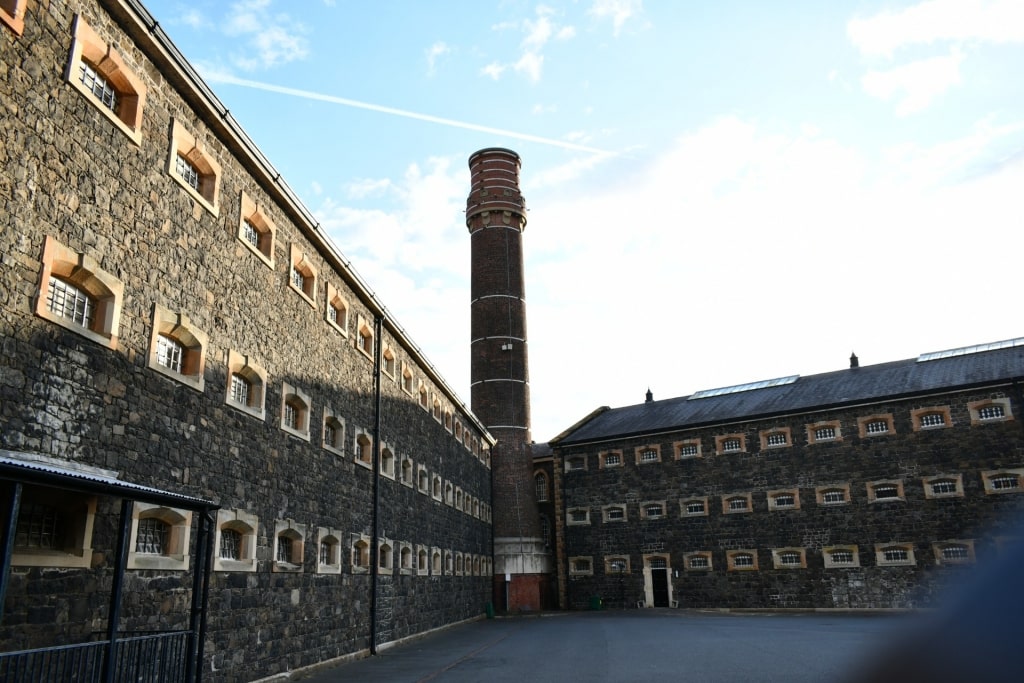
Crumlin Road Gaol, Belfast
In Belfast itself, sights such as the Peace Wall or Crumlin Road Gaol can best be appreciated with a guide. The complicated history of Northern Ireland’s “Troubles”—and its present peace—needs telling by someone who lived it.
Be Prepared to Shop
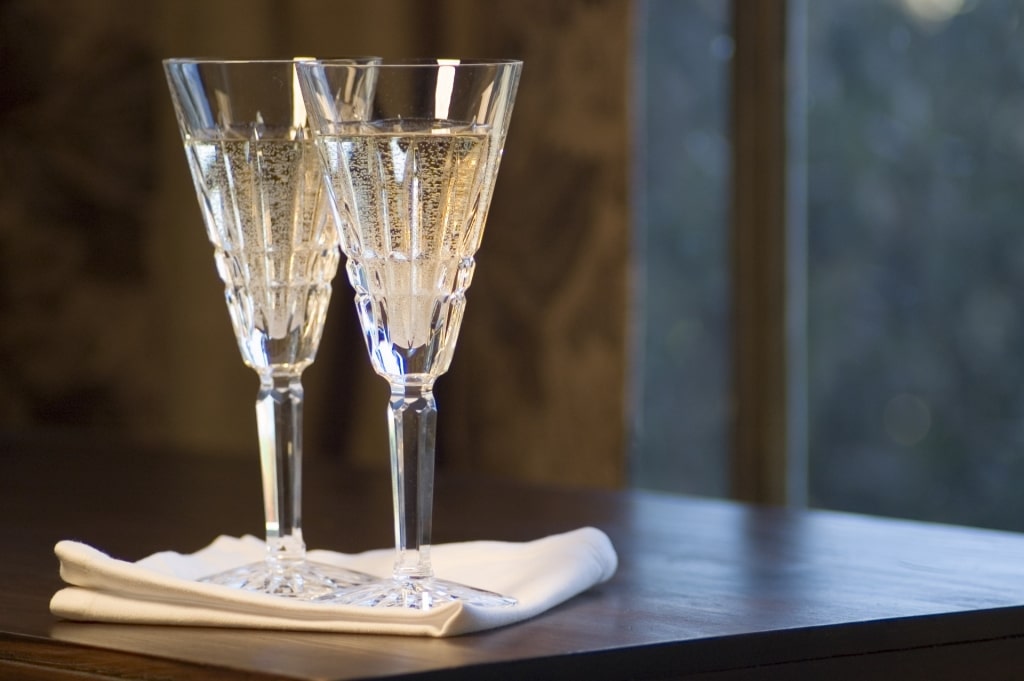
Waterford Crystal
Wherever you go in the beautiful country of Ireland, you’ll find wonderful crafts to tempt you. From pottery and painting to hand-knit woolens and blackthorn walking sticks, the choice is wide.
One of the most famous Irish souvenirs is crystal glass. At the House of Waterford Crystal in Waterford, you can see their unique wares being created and buy the result.
Given the changeable Irish weather, the appeal of wool becomes apparent. Buy yourself (or a loved one) an Aran fisherman’s sweater to keep you cozy on the coldest winter’s night.
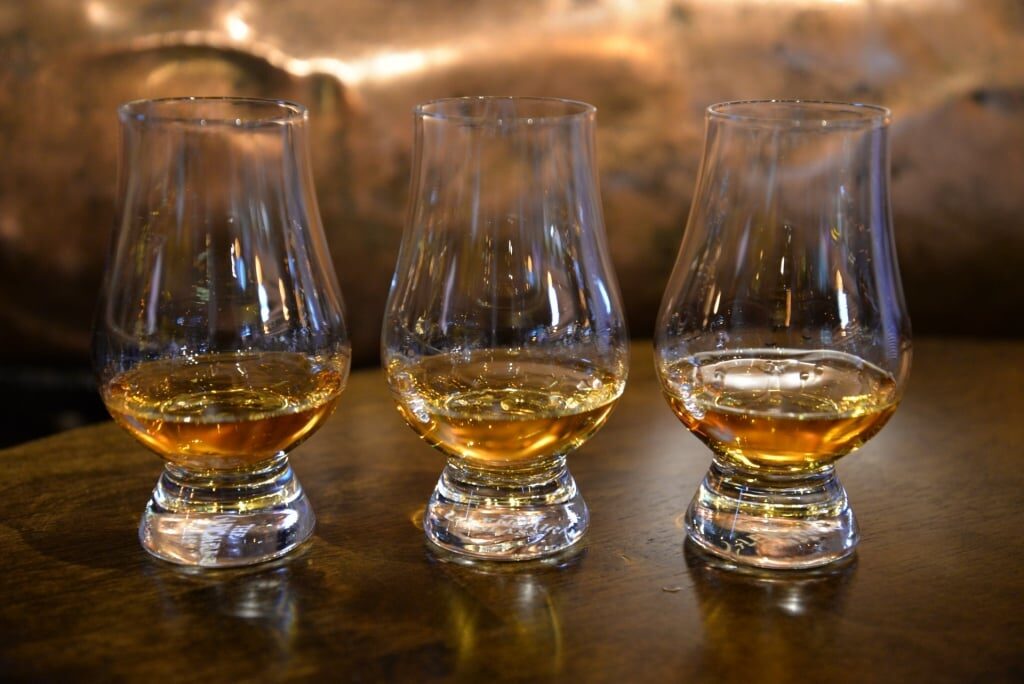
Irish whiskey
Another way to warm up is to try the whiskey that Ireland is known for. Tour Old Bushmills Distillery in Northern Ireland, or Cork’s Midleton Distillery to learn more, and buy bottles.
In Cork, Belfast, Waterford, or Kinsale, you’ll find plenty of bookshops selling Irish books. Whether Irish fiction, non-fiction, or poetry, each will be a souvenir for many years to come.
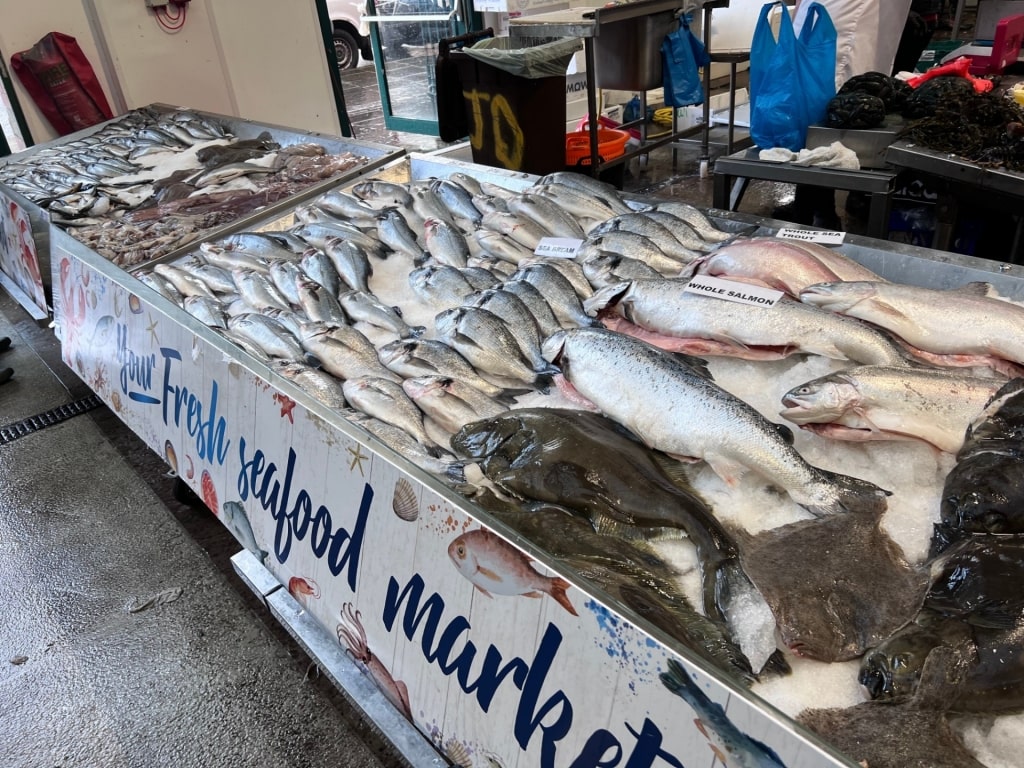
St George’s Market, Belfast
The English Market in Cork or Belfast’s St George’s Market are also great places to pick up some edible souvenirs. Irish cheeses such as Cashel Blue, Blarney Castle, and Milleens from Cork are among the many from Ireland’s 50+ artisan cheese-makers.
Of course, its music might be the very best way to evoke a memory of Ireland. While most music is online now, you’ll still find music shops throughout Ireland selling instruments such as tin whistles and bodhráns (hand-drums).
Don’t Fret About Tipping
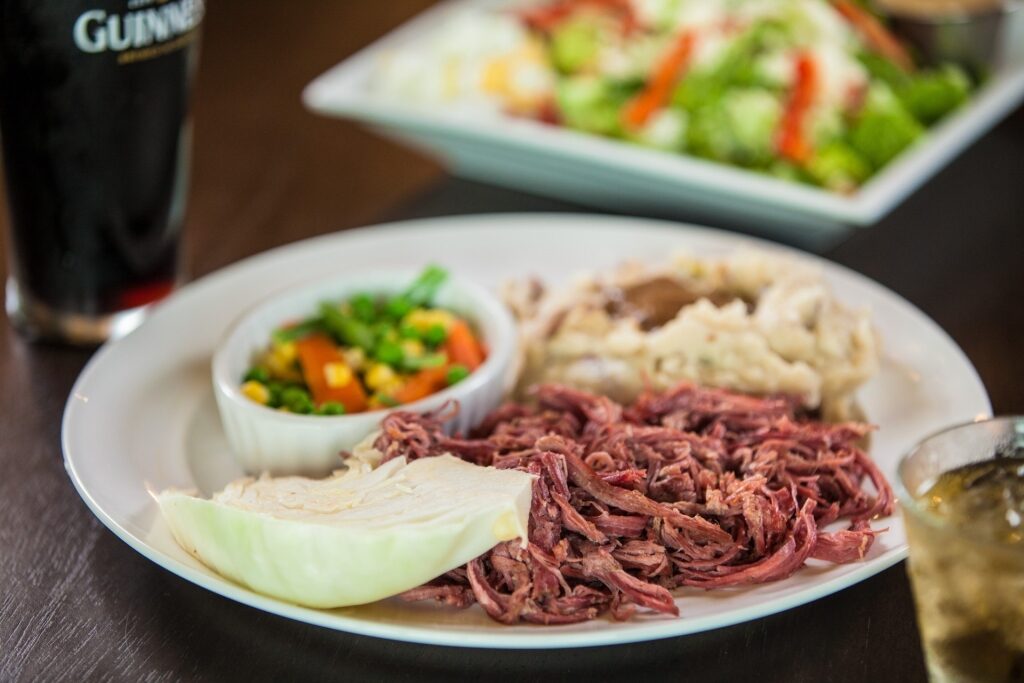
Food in Ireland
Tipping culture is not widespread in Ireland. Most restaurants will include a service charge on your final bill, usually about ten to 15 percent. The amount should be clearly stated on the menu, and it’s optional (so feel free to refuse it for a bad experience).
Of course, you can also leave extra, or a tip around the same percentages if you see none on the bill. Tipping is not a custom in pubs, unless you have table service, although taxis and tour guides expect it.
The official currency in the Republic of Ireland is the euro, with Northern Ireland using pounds sterling. However, it’s become the norm to use debit cards (or Apple/GooglePay, etc.), even for very small amounts.
Read: Best Time to Visit Ireland
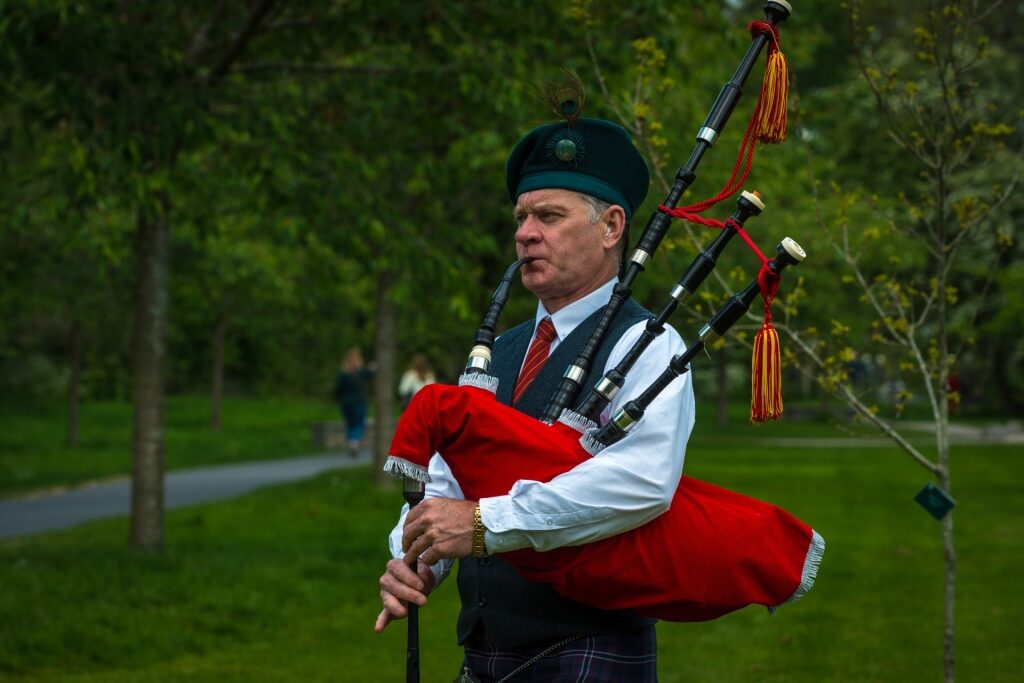
Ireland
Has this list of Ireland travel tips sparked a desire to visit the Emerald Isle? Then browse our Ireland cruises to find the perfect vacation for you and your loved ones.
